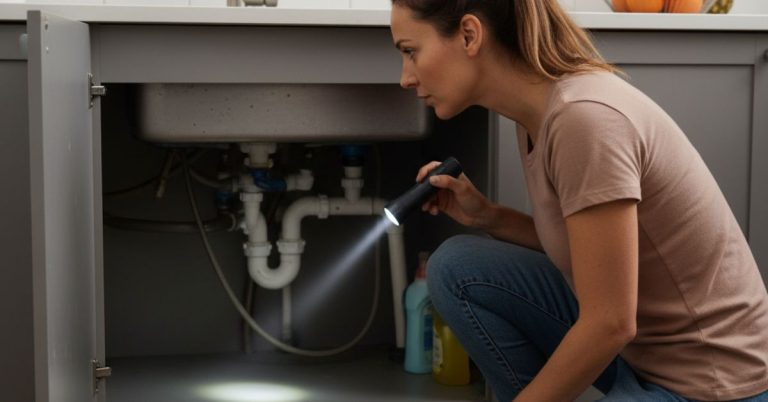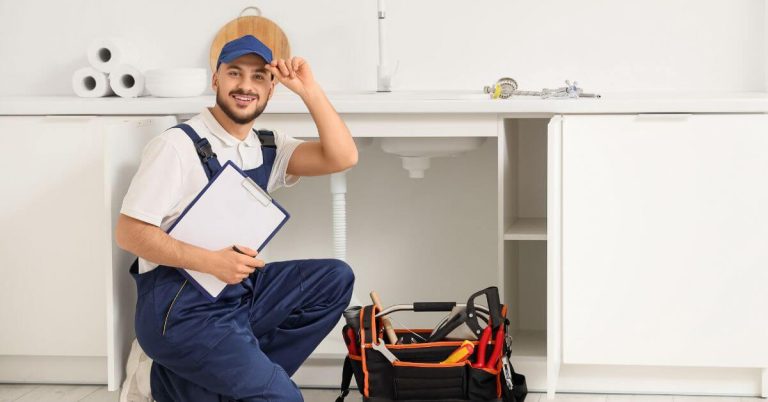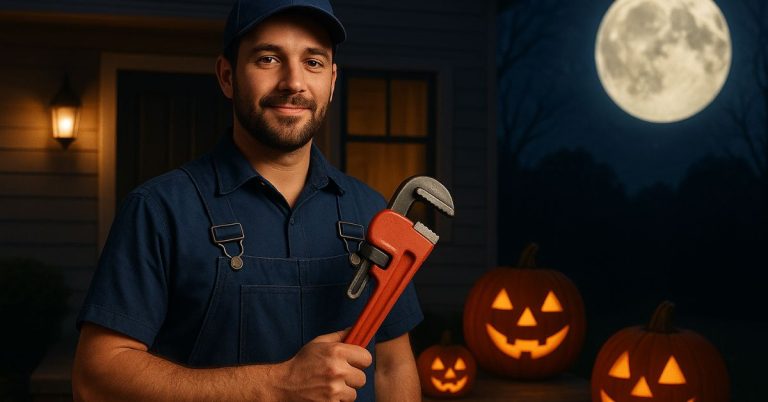A plumbing inspection checklist helps homeowners identify leaks, clogs, corrosion, and water pressure issues early, preventing costly repairs and water damage. Regular inspections ensure efficient plumbing performance and a healthier home environment.
Key Takeaways:
- Detects plumbing problems early
- Prevents costly repairs and water damage
- Maintains home safety and efficiency
Maintaining your home’s plumbing system is essential for preventing costly repairs and ensuring the smooth operation of every fixture. A comprehensive plumbing inspection checklist allows homeowners to detect early signs of wear, leaks, or potential hazards before they escalate. Below, we provide an in-depth guide that covers everything you should inspect, from visible pipes to hidden components of your plumbing infrastructure.
Table of Contents
1. Why Regular Plumbing Inspections Are Essential
Plumbing systems are complex networks of pipes, valves, and fixtures that work together to deliver clean water and remove wastewater. Without routine inspection, small issues such as minor leaks, corrosion, or slow drainage can quickly turn into significant problems. Regular checks help you:
- Prevent water damage to walls, floors, and foundations.
- Save on water bills by identifying leaks early.
- Extend the lifespan of plumbing fixtures and appliances.
- Ensure water quality remains safe and uncontaminated.
- Comply with home insurance or local safety requirements.
For more tips on conserving water and maintaining efficient plumbing at home, the EPA WaterSense program offers practical guidance and resources for homeowners.
2. Tools You’ll Need for a Plumbing Inspection
Before you begin, gather a few essential tools to make the process efficient:
- Flashlight – To inspect dark or tight spaces.
- Adjustable wrench – For tightening or loosening connections.
- Bucket and towels – To manage spills.
- Moisture meter – To detect hidden leaks in walls.
- Pipe inspection camera (optional) – For checking inside drains or sewer lines.
- Pressure gauge – To measure water pressure accurately.
3. Inspecting the Water Supply System
Check for Visible Leaks
Carefully examine all accessible pipes, joints, and fittings for signs of dripping water or moisture. Focus on high-risk areas such as under sinks, around the water heater, and near washing machines. Even minor leaks can waste significant water over time and potentially damage walls, floors, or ceilings, making early detection essential for both safety and cost savings.
Monitor Water Pressure
Use a pressure gauge on an outdoor spigot to measure your household water pressure. The ideal range is 40–60 psi, ensuring optimal appliance performance and plumbing safety. Pressures above this can stress pipes, while lower readings may indicate clogs, leaks, or other issues. Regular checks prevent costly repairs and maintain efficient water flow throughout the home.
Inspect the Main Shut-Off Valve
Locate your main water shut-off valve, typically near the water meter or where the main supply enters your home. Ensure it turns easily and fully closes. Knowing its location and function is crucial in emergencies, allowing you to stop water flow quickly to prevent flooding, damage, or prolonged water waste in case of a serious leak or pipe burst.
4. Examining Drainage and Waste Systems
Test Drain Speeds
Run water in sinks, tubs, and showers to check for slow drainage, which may indicate blockages or buildup inside pipes. For minor issues, a plunger or drain snake often helps. Persistent problems across multiple drains could require professional clogged drain services to prevent backups and maintain a safe, fully functional plumbing system.
Check for Sewer Odors
A continuous sewer smell usually signals vent pipe blockages, cracked seals, or dry traps. Regularly ensure each drain trap contains water to block gases. If odors persist, it may require a sewer replacement to resolve underlying damage, safeguarding your home’s hygiene and preventing health hazards from harmful sewer gases.
Inspect for Signs of Backflow
Backflow happens when wastewater flows backward into clean water lines, risking contamination. Make sure backflow prevention devices are correctly installed and operational, especially in areas with irrigation systems or basement plumbing. Regular inspection protects water quality and ensures compliance with local plumbing regulations, reducing the risk of costly repairs and potential health issues.
Get your water heater repaired or replaced the same day
5. Bathroom Plumbing Inspection Checklist
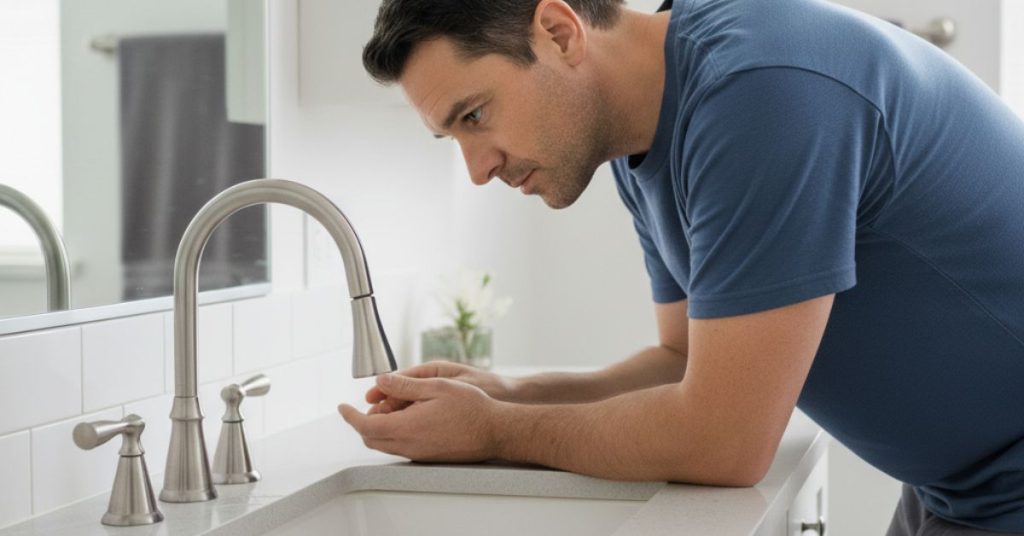
Inspect Faucets and Showerheads
Turn on all bathroom fixtures and check for drips, leaks, or irregular water pressure to identify inefficiencies or potential plumbing issues. Clean or replace aerators and showerheads to remove mineral buildup that restricts flow. If water continues dripping, schedule a shower leaking repair promptly to prevent unnecessary water waste and possible damage to fixtures or surrounding areas.
Examine Toilets
Check around the toilet base for moisture or leaks and listen for continuous running water after flushing. A malfunctioning toilet can waste over 200 gallons of water per day, leading to higher utility costs. Prompt toilet leaking repair helps conserve water, prevent floor damage, and ensure the flapper, fill valve, and seals function efficiently and reliably.
Check Grout and Caulk
Regularly inspect all joints around tubs, showers, and sinks for cracked or missing caulking. Proper sealing blocks water from seeping into floors or walls, preventing structural deterioration and mold growth. Timely re-caulking enhances bathroom durability, maintains hygiene, and keeps the space looking clean and well-maintained while protecting against hidden moisture damage.
6. Kitchen Plumbing Inspection Checklist
Inspect Sink and Faucet Connections
Check under the sink thoroughly for signs of moisture, rust, or corrosion, which often indicate leaks or failing parts. Tighten any loose fittings and replace worn washers to prevent water damage. Regular faucet and sink inspection helps maintain good water pressure, prevents mold growth, and extends the life of your kitchen plumbing fixtures.
Check Garbage Disposal
Run the garbage disposal with cold water, listening carefully for unusual grinding or rattling noises that may indicate worn components. Inspect underneath for leaks or water damage. If you detect odors, clean it using a mixture of ice cubes and citrus peels to remove buildup. Persistent problems or damage may require a full garbage disposal replacement to ensure safe, efficient operation.
Examine Dishwasher Supply Line
Routinely inspect the hose connection behind your dishwasher for any drips, bulges, or discoloration that may signal deterioration. Replace the line if damage is visible and ensure the drain hose forms a high loop to stop backflow. Proper maintenance prevents leaks, protects flooring, and ensures your dishwasher operates smoothly and safely.
7. Laundry Room and Utility Area
Inspect Washer Hoses
Regularly examine your washing machine hoses for cracks, bulges, or leaks, replacing them every 3–5 years to prevent flooding. For greater durability and reliability, consider using stainless steel braided hoses, which resist wear, pressure, and accidental punctures. Proper maintenance protects your laundry area, ensures safe operation, and helps avoid costly water damage or emergency repairs.
Check Utility Sink
Run water through the utility sink and observe drainage speed to ensure there are no clogs. Test the faucet handles and spout for smooth operation, while checking under the sink for leaks or corrosion. Proper inspection maintains functionality, prevents water damage, and ensures the sink remains safe and efficient for everyday laundry or cleaning tasks.
Inspect Water Heater
- Visual Inspection: Look for corrosion, rust, or puddles around the base.
- Temperature Setting: Keep your water heater at 120°F (49°C) for efficiency and safety.
- Flush Annually: Drain sediment buildup to maintain optimal performance.
- Check the Anode Rod: Replace it every 3–5 years to prevent tank corrosion.
For more detailed guidance on safely maintaining your water heater and improving energy efficiency, visit the U.S. Department of Energy’s water heating tips.
8. Outdoor Plumbing and Irrigation System
Inspect Outdoor Faucets (Hose Bibbs)
After winter, carefully examine all outdoor faucets for cracks or leaks caused by freezing temperatures. Turn on each faucet briefly to confirm water flows freely without drips. Repairing or replacing damaged faucets early prevents water waste, protects your home’s exterior, and avoids more extensive damage to pipes and landscaping during seasonal changes.
Examine Sprinkler System
Regularly inspect sprinkler heads for damage, misalignment, or leaks, which can waste water and harm your landscape. Check hoses and connections, and ensure that backflow preventers are functional and compliant with local codes. Proper maintenance keeps your irrigation system efficient, protects water quality, and prevents contamination of your household water supply.
Check Gutters and Downspouts
Clear and inspect all clogged gutters to prevent water from pooling near your foundation, which can lead to basement flooding, erosion, or structural damage. Ensure downspouts direct water away from the house. Routine maintenance protects your property, prolongs the life of your roof and siding, and keeps your home’s drainage system functioning effectively.
9. Advanced Plumbing Checks
Inspect for Pipe Corrosion
Regularly examine your plumbing for signs of corrosion, such as green stains, rust spots, or reduced water pressure in copper or galvanized steel pipes. Persistent issues can compromise water quality and flow. When corrosion is evident or leaks appear, it is often necessary to replace aging pipes to maintain a safe, efficient, and reliable plumbing system.
Test for Hidden Leaks
Use your water meter to detect hidden leaks:
- Turn off all water-using appliances.
- Note the meter reading.
- Wait 1–2 hours without using water.
If the meter changes, you likely have a leak.
Evaluate Water Quality
Discolored, cloudy, or metallic-tasting water may indicate rust, sediment, or pipe contamination, signaling potential plumbing issues or deteriorating pipes. To ensure safe, clean water throughout your home, consider installing a whole house water filtration system. Regular testing and maintenance protect your health, preserve appliances, and prevent long-term damage caused by contaminants in your water supply.
10. When to Call a Professional Plumber
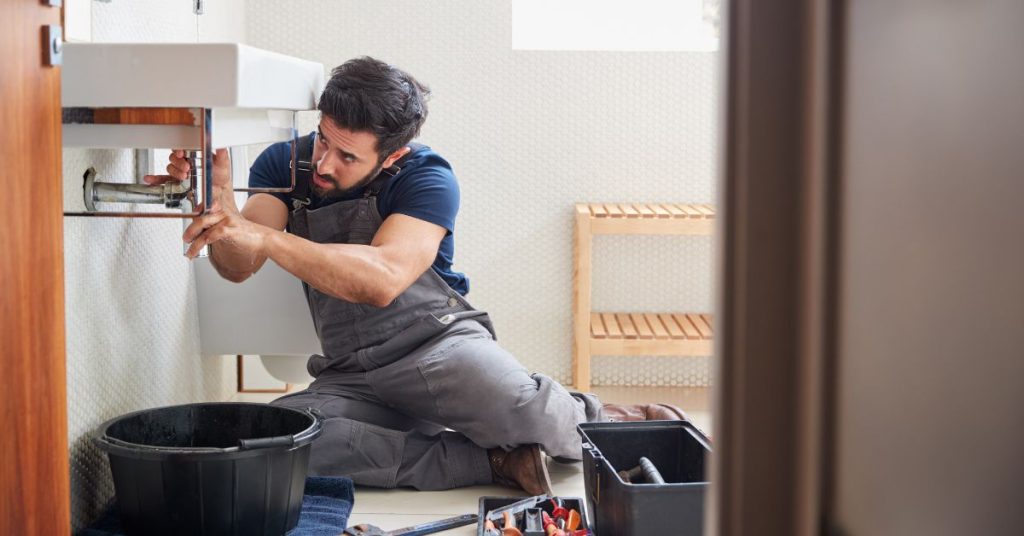
Some plumbing problems are too complex for DIY fixes. Issues like sewer line blockages, slab leaks, or pipe replacements require professional expertise to prevent serious damage. A yearly sewer inspection helps detect hidden problems early, while specialized hydro jetting services can efficiently clear stubborn clogs, ensuring your plumbing system remains safe, functional, and damage-free.
Who to Call for Trusted Plumbing Inspections and Repairs
When plumbing issues go beyond simple DIY fixes, it’s time to call the experts. The professionals at 5 Star Best Plumbing deliver reliable, detail-oriented professional plumbing inspection services to keep your home safe and efficient. Our experienced team uses advanced tools and proven methods to diagnose and resolve even the most hidden issues.
Whether you need urgent repairs, maintenance, or a full plumbing service in Los Angeles, you can count on our prompt, high-quality support. Ensure your plumbing system runs smoothly and damage-free — Book now for expert plumbing care and lasting peace of mind.
11. Seasonal Plumbing Maintenance Tips
- Winter: Insulate all exposed pipes to prevent freezing, bursting, and costly water damage during cold months.
- Spring: Test sump pumps and examine outdoor plumbing for leaks, cracks, or wear from winter weather.
- Summer: Inspect irrigation systems, water softeners, and outdoor faucets for leaks or clogs, ensuring proper operation.
- Fall: Clean gutters thoroughly and schedule water heater servicing to prepare plumbing for winter conditions efficiently.
Conclusion
A thorough plumbing inspection checklist empowers homeowners to maintain efficiency, prevent damage, and protect their property’s value. Regular inspections help detect minor issues before they escalate, saving money, preserving water quality, and ensuring every fixture operates smoothly. With proper maintenance, you can avoid costly repairs and enjoy peace of mind knowing your home’s plumbing is reliable year-round.
For professional assistance or urgent repairs, don’t hesitate to contact us. Be sure to explore how our financing options can make service easier, providing convenient, stress-free solutions for all your plumbing needs.
FAQs
How often should I perform a plumbing inspection?
Homeowners should conduct a basic plumbing inspection at least twice a year to catch leaks, clogs, or corrosion early. Professional inspections are recommended annually to identify hidden or complex issues.
What are the most common plumbing issues to look for?
Leaks under sinks, slow drains, running toilets, and low water pressure are the most frequent problems. Checking for corrosion, backflow, and sewer odors can prevent more serious damage.
Can I perform a plumbing inspection myself?
Yes, homeowners can handle basic inspections using a checklist, flashlight, and simple tools. However, complex issues like sewer line blockages or slab leaks require professional expertise.
How do I detect hidden leaks in my plumbing system?
You can check your water meter by turning off all water appliances, noting the reading, waiting 1–2 hours, and seeing if it changes. A difference indicates a hidden leak that should be addressed immediately.
Should I inspect outdoor plumbing like hose bibs and irrigation systems?
Yes, outdoor plumbing should be checked regularly to prevent leaks, water waste, and damage from weather changes. Ensuring sprinklers, hose bibs, and gutters are functioning properly protects your landscaping and foundation from costly water issues.



